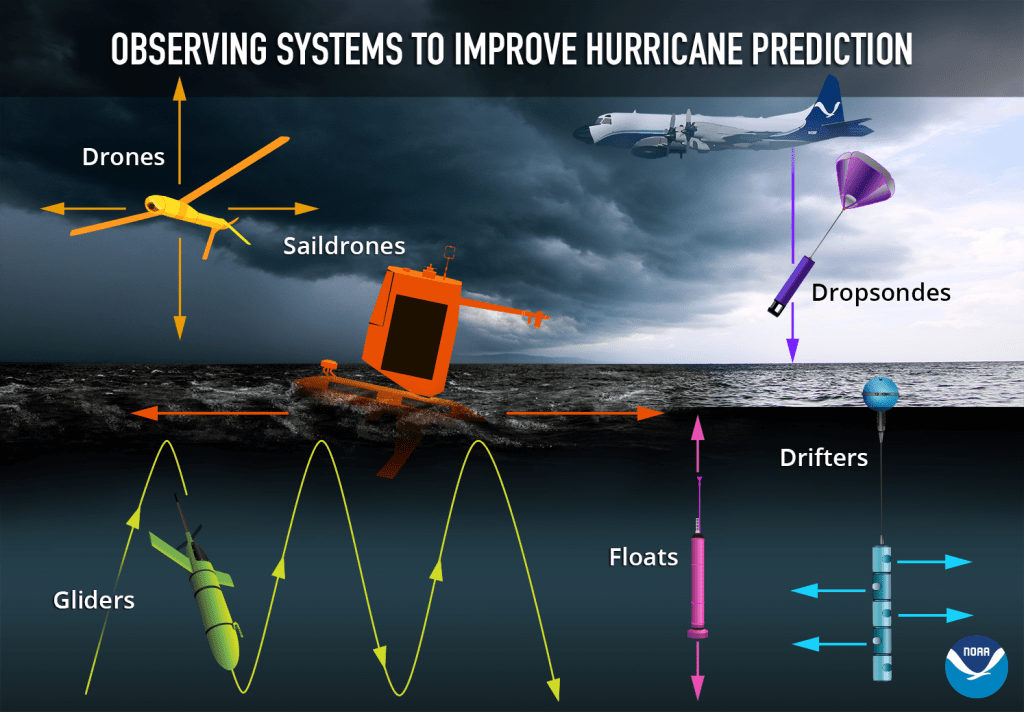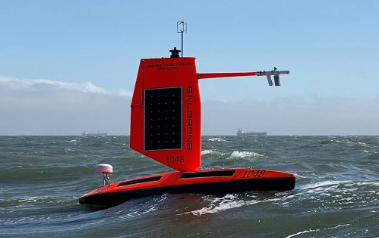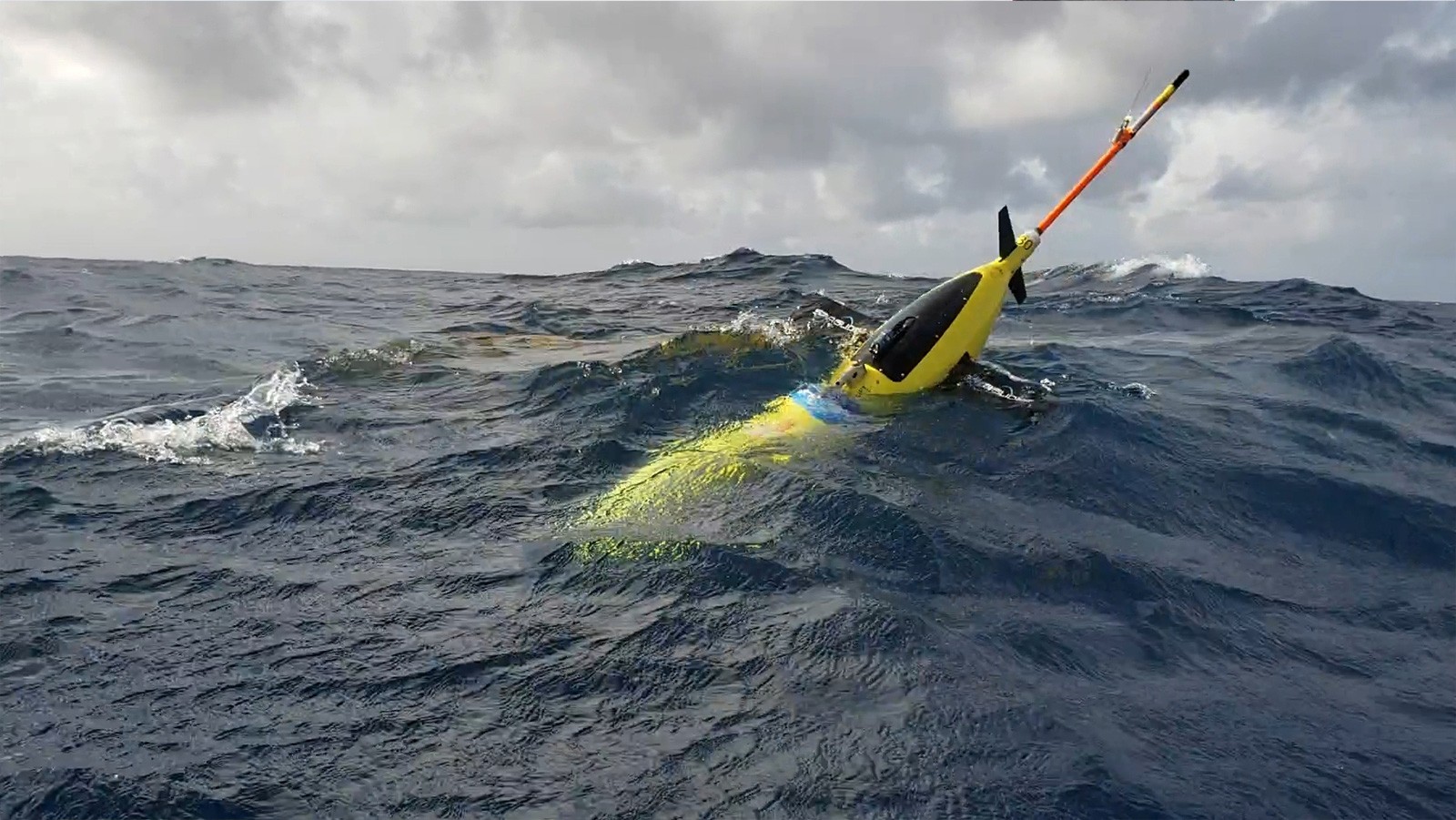New Hurricane Research Supports Advances to Tropical Forecasts
Special Stories
27 Jun 2022 1:30 AM
[The G-IV is a twin-engine jet piloted by NOAA Corps officers and crewed by NOAA civilian engineers and meteorologists. Its primary mission is to fly tropical cyclone surveillance missions. (NOAA)]
[Written by NOAA AOML] This summer during the 2022 Atlantic hurricane season, scientists at NOAA’s Atlantic Oceanographic and Meteorological Laboratory (AOML) will once again be on the frontlines helping NOAA prepare the public for severe weather. They will also conduct new research on the complex processes of how tropical cyclones form, develop, and dissipate.
AOML’s operational missions tasked by NOAA’s Environmental Modeling Center and National Hurricane Center will keep forecasters abreast of the ever-changing, dynamic conditions as storms develop and intensify. Flying aboard NOAA’s P-3 and G-IV Hurricane Hunter aircraft, AOML scientists will sample the periphery around storms and the towering cumulonimbus clouds that circle the hurricane eye.
 [This summer, NOAA will launch an assortment of autonomous instruments to sample the ocean and atmosphere in real-time. (NOAA PMEL)]
A top priority will be to improve predictions of rapid intensification, events that are difficult to forecast due to the number of interacting factors. When maximum sustained winds quickly ramp up, so does the destructive capacity of a storm. To tackle this forecasting challenge, AOML scientists will coordinate with multiple partners to launch a host of instruments that sample the ocean and atmosphere in real-time.
Surface drifters, underwater gliders, and profiling floats will gather observations from the sea surface to depths of half a mile. Small uncrewed aerial systems launched from the P-3 will be tested to sample the atmosphere at altitudes just hundreds of feet above the ocean. Five saildrone uncrewed surface vehicles will be launched in partnership with NOAA’s Pacific Marine Environmental Laboratory and Saildrone, Inc. to sample the upper ocean and air-sea interface. Data from the drifters, gliders, and floats will be transmitted via satellite into NOAA’s operational Hurricane Weather Research and Forecast System and its cutting-edge research forecast model, the Hurricane Analysis and Forecast System.
[This summer, NOAA will launch an assortment of autonomous instruments to sample the ocean and atmosphere in real-time. (NOAA PMEL)]
A top priority will be to improve predictions of rapid intensification, events that are difficult to forecast due to the number of interacting factors. When maximum sustained winds quickly ramp up, so does the destructive capacity of a storm. To tackle this forecasting challenge, AOML scientists will coordinate with multiple partners to launch a host of instruments that sample the ocean and atmosphere in real-time.
Surface drifters, underwater gliders, and profiling floats will gather observations from the sea surface to depths of half a mile. Small uncrewed aerial systems launched from the P-3 will be tested to sample the atmosphere at altitudes just hundreds of feet above the ocean. Five saildrone uncrewed surface vehicles will be launched in partnership with NOAA’s Pacific Marine Environmental Laboratory and Saildrone, Inc. to sample the upper ocean and air-sea interface. Data from the drifters, gliders, and floats will be transmitted via satellite into NOAA’s operational Hurricane Weather Research and Forecast System and its cutting-edge research forecast model, the Hurricane Analysis and Forecast System.
 [Saildrones are uncrewed surface vehicles powered by wind and solar energy and remotely piloted via satellite telecommunication. They measure solar irradiance, barometric pressure, air temperature, humidity, wind, waves, water temperature, salinity, chlorophyll, dissolved oxygen and ocean current. They can also measure surface short- and long-wave radiation. The five saildrone of this deployment are specially designed for hurricane observations. From NOAA]
The frontlines of research this summer will take AOML scientists thousands of miles across the Atlantic to study the earliest beginnings of how tropical cyclones form. In partnership with the National Aeronautics and Space Administration (NASA), NOAA will deploy the NOAA G-IV jet to the Cape Verde islands, the “nursery grounds” for some of the Atlantic’s largest, fiercest storms.
This first-ever deployment for the NOAA Hurricane Hunters will enable AOML scientists to study how thunderstorms that drift off the west African coast develop into tropical waves, the “seedlings” for many tropical cyclones.
[Saildrones are uncrewed surface vehicles powered by wind and solar energy and remotely piloted via satellite telecommunication. They measure solar irradiance, barometric pressure, air temperature, humidity, wind, waves, water temperature, salinity, chlorophyll, dissolved oxygen and ocean current. They can also measure surface short- and long-wave radiation. The five saildrone of this deployment are specially designed for hurricane observations. From NOAA]
The frontlines of research this summer will take AOML scientists thousands of miles across the Atlantic to study the earliest beginnings of how tropical cyclones form. In partnership with the National Aeronautics and Space Administration (NASA), NOAA will deploy the NOAA G-IV jet to the Cape Verde islands, the “nursery grounds” for some of the Atlantic’s largest, fiercest storms.
This first-ever deployment for the NOAA Hurricane Hunters will enable AOML scientists to study how thunderstorms that drift off the west African coast develop into tropical waves, the “seedlings” for many tropical cyclones.
 [Ocean gliders are uncrewed underwater vehicles powered by batteries. They measure water temperature, salinity, and currents from the surface down to 1000 m. They send their observations to satellites when they are at the ocean surface. There will be approximately 20 glider missions operating during the 2021 hurricane season, several of them operating in areas where the saildrones will take observations in order to provide quasi-collocated simultaneous observations of the ocean and atmosphere.]
The groundbreaking research supports the Advancing the Prediction of Hurricanes Experiment, or APHEX, the main component of AOML’s Hurricane Field Program. Research to address additional science questions will be conducted in collaboration with the Office of Naval Research and NASA.
AOML’s operational and research efforts throughout the 2022 Atlantic hurricane season will push the boundaries of NOAA’s forecasting capabilities. The data they gather will not only protect life and property, but also advance the understanding of how and why some storms form and rapidly intensify.
[Ocean gliders are uncrewed underwater vehicles powered by batteries. They measure water temperature, salinity, and currents from the surface down to 1000 m. They send their observations to satellites when they are at the ocean surface. There will be approximately 20 glider missions operating during the 2021 hurricane season, several of them operating in areas where the saildrones will take observations in order to provide quasi-collocated simultaneous observations of the ocean and atmosphere.]
The groundbreaking research supports the Advancing the Prediction of Hurricanes Experiment, or APHEX, the main component of AOML’s Hurricane Field Program. Research to address additional science questions will be conducted in collaboration with the Office of Naval Research and NASA.
AOML’s operational and research efforts throughout the 2022 Atlantic hurricane season will push the boundaries of NOAA’s forecasting capabilities. The data they gather will not only protect life and property, but also advance the understanding of how and why some storms form and rapidly intensify.
 [This summer, NOAA will launch an assortment of autonomous instruments to sample the ocean and atmosphere in real-time. (NOAA PMEL)]
A top priority will be to improve predictions of rapid intensification, events that are difficult to forecast due to the number of interacting factors. When maximum sustained winds quickly ramp up, so does the destructive capacity of a storm. To tackle this forecasting challenge, AOML scientists will coordinate with multiple partners to launch a host of instruments that sample the ocean and atmosphere in real-time.
Surface drifters, underwater gliders, and profiling floats will gather observations from the sea surface to depths of half a mile. Small uncrewed aerial systems launched from the P-3 will be tested to sample the atmosphere at altitudes just hundreds of feet above the ocean. Five saildrone uncrewed surface vehicles will be launched in partnership with NOAA’s Pacific Marine Environmental Laboratory and Saildrone, Inc. to sample the upper ocean and air-sea interface. Data from the drifters, gliders, and floats will be transmitted via satellite into NOAA’s operational Hurricane Weather Research and Forecast System and its cutting-edge research forecast model, the Hurricane Analysis and Forecast System.
[This summer, NOAA will launch an assortment of autonomous instruments to sample the ocean and atmosphere in real-time. (NOAA PMEL)]
A top priority will be to improve predictions of rapid intensification, events that are difficult to forecast due to the number of interacting factors. When maximum sustained winds quickly ramp up, so does the destructive capacity of a storm. To tackle this forecasting challenge, AOML scientists will coordinate with multiple partners to launch a host of instruments that sample the ocean and atmosphere in real-time.
Surface drifters, underwater gliders, and profiling floats will gather observations from the sea surface to depths of half a mile. Small uncrewed aerial systems launched from the P-3 will be tested to sample the atmosphere at altitudes just hundreds of feet above the ocean. Five saildrone uncrewed surface vehicles will be launched in partnership with NOAA’s Pacific Marine Environmental Laboratory and Saildrone, Inc. to sample the upper ocean and air-sea interface. Data from the drifters, gliders, and floats will be transmitted via satellite into NOAA’s operational Hurricane Weather Research and Forecast System and its cutting-edge research forecast model, the Hurricane Analysis and Forecast System.
 [Saildrones are uncrewed surface vehicles powered by wind and solar energy and remotely piloted via satellite telecommunication. They measure solar irradiance, barometric pressure, air temperature, humidity, wind, waves, water temperature, salinity, chlorophyll, dissolved oxygen and ocean current. They can also measure surface short- and long-wave radiation. The five saildrone of this deployment are specially designed for hurricane observations. From NOAA]
The frontlines of research this summer will take AOML scientists thousands of miles across the Atlantic to study the earliest beginnings of how tropical cyclones form. In partnership with the National Aeronautics and Space Administration (NASA), NOAA will deploy the NOAA G-IV jet to the Cape Verde islands, the “nursery grounds” for some of the Atlantic’s largest, fiercest storms.
This first-ever deployment for the NOAA Hurricane Hunters will enable AOML scientists to study how thunderstorms that drift off the west African coast develop into tropical waves, the “seedlings” for many tropical cyclones.
[Saildrones are uncrewed surface vehicles powered by wind and solar energy and remotely piloted via satellite telecommunication. They measure solar irradiance, barometric pressure, air temperature, humidity, wind, waves, water temperature, salinity, chlorophyll, dissolved oxygen and ocean current. They can also measure surface short- and long-wave radiation. The five saildrone of this deployment are specially designed for hurricane observations. From NOAA]
The frontlines of research this summer will take AOML scientists thousands of miles across the Atlantic to study the earliest beginnings of how tropical cyclones form. In partnership with the National Aeronautics and Space Administration (NASA), NOAA will deploy the NOAA G-IV jet to the Cape Verde islands, the “nursery grounds” for some of the Atlantic’s largest, fiercest storms.
This first-ever deployment for the NOAA Hurricane Hunters will enable AOML scientists to study how thunderstorms that drift off the west African coast develop into tropical waves, the “seedlings” for many tropical cyclones.
 [Ocean gliders are uncrewed underwater vehicles powered by batteries. They measure water temperature, salinity, and currents from the surface down to 1000 m. They send their observations to satellites when they are at the ocean surface. There will be approximately 20 glider missions operating during the 2021 hurricane season, several of them operating in areas where the saildrones will take observations in order to provide quasi-collocated simultaneous observations of the ocean and atmosphere.]
The groundbreaking research supports the Advancing the Prediction of Hurricanes Experiment, or APHEX, the main component of AOML’s Hurricane Field Program. Research to address additional science questions will be conducted in collaboration with the Office of Naval Research and NASA.
AOML’s operational and research efforts throughout the 2022 Atlantic hurricane season will push the boundaries of NOAA’s forecasting capabilities. The data they gather will not only protect life and property, but also advance the understanding of how and why some storms form and rapidly intensify.
[Ocean gliders are uncrewed underwater vehicles powered by batteries. They measure water temperature, salinity, and currents from the surface down to 1000 m. They send their observations to satellites when they are at the ocean surface. There will be approximately 20 glider missions operating during the 2021 hurricane season, several of them operating in areas where the saildrones will take observations in order to provide quasi-collocated simultaneous observations of the ocean and atmosphere.]
The groundbreaking research supports the Advancing the Prediction of Hurricanes Experiment, or APHEX, the main component of AOML’s Hurricane Field Program. Research to address additional science questions will be conducted in collaboration with the Office of Naval Research and NASA.
AOML’s operational and research efforts throughout the 2022 Atlantic hurricane season will push the boundaries of NOAA’s forecasting capabilities. The data they gather will not only protect life and property, but also advance the understanding of how and why some storms form and rapidly intensify.All Weather News
More